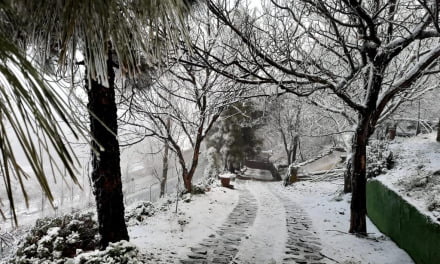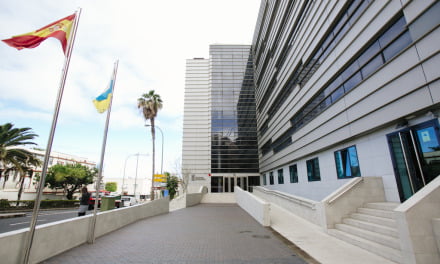San Bartolomé de Tirajana is set to grow its tourism capacity over the coming years with a newly presented plan outlining the urban development of lands located on the touristed south of Gran Canaria at Tarajalillo, Meloneras and Santa Águeda.

The new General Supplementary Plan, drafted by Gesplan technicians, for the Ministry of Territorial Policy, has been presented before the entire local authorities specifically highlighting these areas in which to increase the amount of accommodation spaces available.
Tarajalillo, along the south east coastal entry point to San Agustín and Playa del Inglés, is where the aristocratic Del Castillo family have been planning for years to build a new tourism complex, dubbed the Costa Afortunada, made up of villas, up to five luxury hotels, and a nine-hole golf course. This land now exceeds the requirements of the land law brought in at the end of 2017, which established that plots which have not had planning applications filed as of September 1 of this year are to remain classified as rustic. For this reason, the promoters asked the San Bartolomé Town Council to reclassify the land as an undesignated development, in order to save the nearly 2.4 million square meters that they own between the old national highway (GC500) and the current one (GC1) from becoming restricted to developers. A primary entry point to this municipality, once past the El Berriel Aeroclub, it has been clear for a long time that this could be a major profit centre of the future.
 The whole piece of land that extends from Bahía Feliz to Playa del Águila was named as Tarajalillo-Lilolandia in the 1996 General Urban Plan, but the promoters did not present a development project to the Town Council requesting a license and have requested more beds than the 4,600 in the Partial Plan PTP9 be included by the Gran Canaria Cabildo.
The whole piece of land that extends from Bahía Feliz to Playa del Águila was named as Tarajalillo-Lilolandia in the 1996 General Urban Plan, but the promoters did not present a development project to the Town Council requesting a license and have requested more beds than the 4,600 in the Partial Plan PTP9 be included by the Gran Canaria Cabildo.
However, promoters have not done the same to save other plots they have in Lomo Gordo, behind Aqualand, where they had intended to make an archaeological museum and a park, and neither has the Lopesan group with another plot in El Hornillo, between the GC500 and GC1 near Meloneras, where they had planned to make a theme park.
In Meloneras, Lopesan plan to build two new hotels, one in an area named zone 2A, which is where they built their first hotels in this main tourist area of San Bartolomé de Tirajana; and another next to the golf course, stretching along the coast. Like developers Santana Cazorla and the Del Castillo family, Lopesan also has other plots in another part of Meloneras, known as 2B, where new hotels can be accommodated.
 Another primary area reserved for tourism industry growth is Santa Águeda, near El Pajar, where the Del Castillo and Lopesan families both have important parcels of land to build new accommodation in the future, currently occupied by banana fields and a cement works. La Cometa, near Pasito Blanco, is where the German businessman Gerlach plans to make two new hotels.
Another primary area reserved for tourism industry growth is Santa Águeda, near El Pajar, where the Del Castillo and Lopesan families both have important parcels of land to build new accommodation in the future, currently occupied by banana fields and a cement works. La Cometa, near Pasito Blanco, is where the German businessman Gerlach plans to make two new hotels.
The newly presented General Supplementary Plan document deals with 8,180 observations and objections from the nearly 11,000 that were registered during the public consultation process, in the wake of fears over owner rights to live in or exploit apartments built in tourist complexes, and these mainly focus on the residential use of apartments, as well as addressing the demand for land for a suggested future new population growth of the municipality up to about 90,000, from the current 54,000 official residents.
In addition to the regularisation of these potential developments, the nuclei of Fataga , Ayacata, La Plata and Cercados de Araña have been left out of the drafting of the document because they are within Protected Natural Spaces. It has been foreseen that detailed planning framed in the legislation around natural spaces may cause a legal conflict in the interpretation of guidelines, so as not to hinder implementation of the plan they have taken out proposals connected to such areas..
 The plan recognises and includes houses that are within the 200 meters surrounding consolidated urban areas, and that as such incorporates the core of La Hoya de Tunte, up near the picturesque municipal capital (San Bartolomé de Tirajana) Tunte, and also maintains the 21 rural settlements originally contemplated in the 1996 General Plan still in force, although new rural settlements like La Sabina and the two Lomos de Cuatro Matas in El Salobre are included with extra definitions that attempt to deal with some of the complexities involved with a spread out population where a lot of unplanned building works have already occurred on lands that were originally classified as rustic, allowing at least some of those properties to become regularised, though technicians have confirmed that the problems encountered in places like El Salobre are likely to be long lasting.
The plan recognises and includes houses that are within the 200 meters surrounding consolidated urban areas, and that as such incorporates the core of La Hoya de Tunte, up near the picturesque municipal capital (San Bartolomé de Tirajana) Tunte, and also maintains the 21 rural settlements originally contemplated in the 1996 General Plan still in force, although new rural settlements like La Sabina and the two Lomos de Cuatro Matas in El Salobre are included with extra definitions that attempt to deal with some of the complexities involved with a spread out population where a lot of unplanned building works have already occurred on lands that were originally classified as rustic, allowing at least some of those properties to become regularised, though technicians have confirmed that the problems encountered in places like El Salobre are likely to be long lasting.
The mayor of San Bartolomé de Tirajana , Marco Aurelio Perez said that the intention of the municipal government is to articulate a calendar to explain the General Plan to social and neighborhood groups, starting this coming January.













